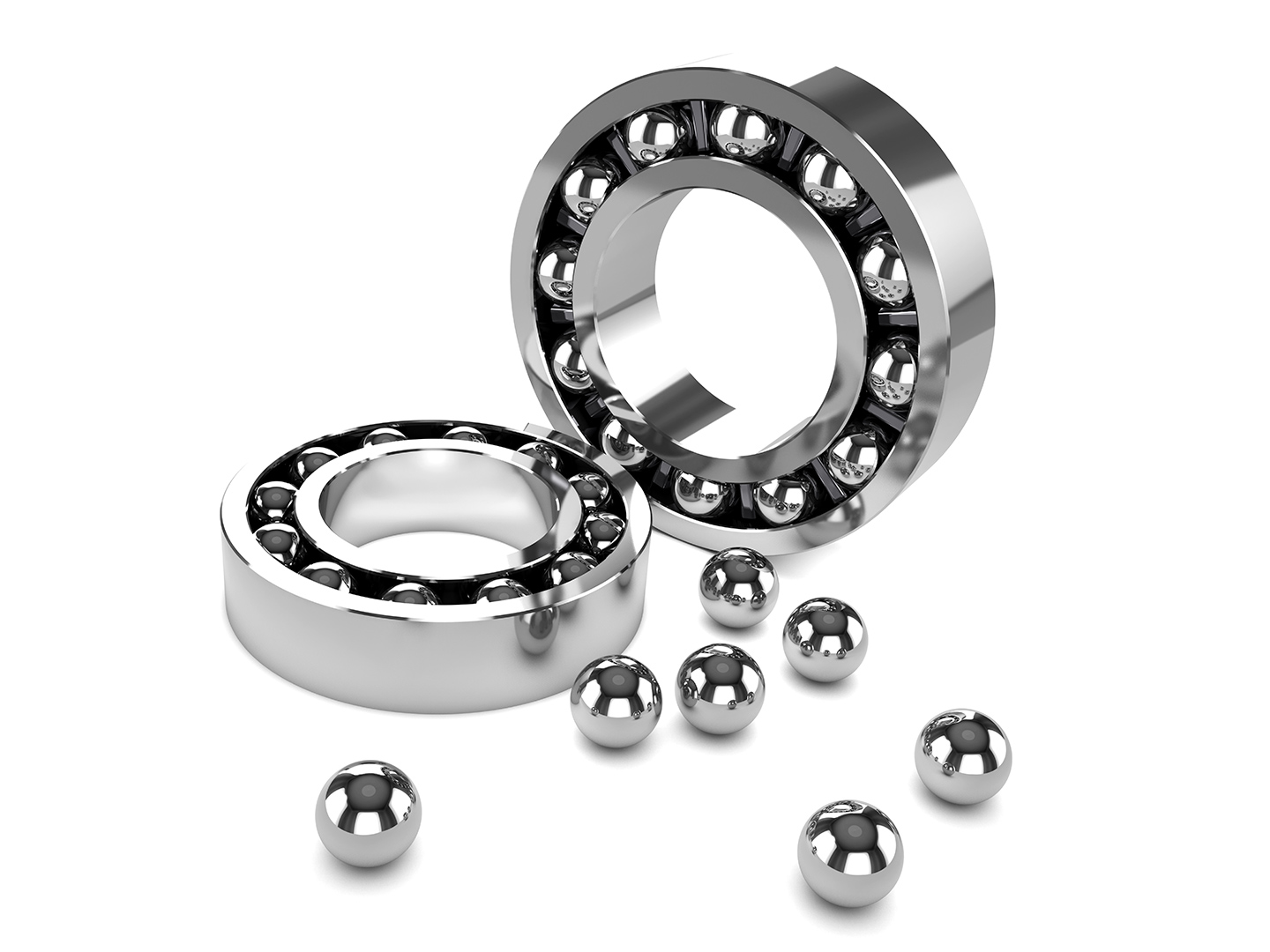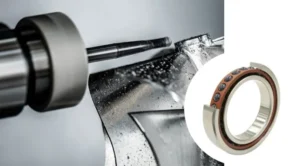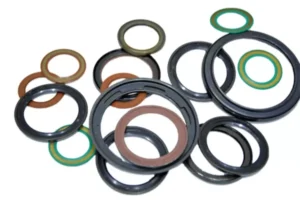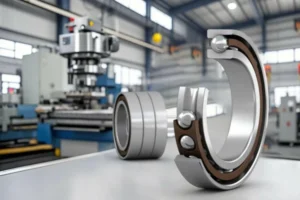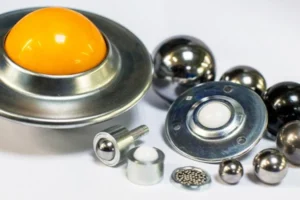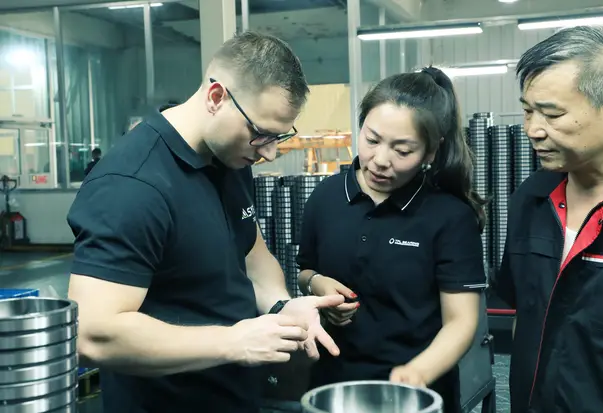Introduction
Ever wonder how your skateboard wheels spin so fast and smooth? Or how the fan in your room turns quietly for hours? A lot of the time, the secret ingredient is something called ball bearings!
These little round things might seem small, but they do a really big job in tons of machines and gadgets we use every day. They’re like tiny helpers making movement easy.
In this guide, we’ll give you a simple ball bearing definition, show you the main ball bearing parts, explain how do ball bearings work, and tell you what are ball bearings used for. Ready to roll into it? Let’s go!

Ball Bearing Meaning: What Exactly Is It?
Simply put, the ball bearing meaning is a type of bearing that uses tiny balls to help parts move smoothly. It’s all about making things roll instead of rub.
Ball Bearing Definition
A little gadget called a ball bearing uses tiny spherical balls to reduce the rubbing, or friction, between moving components. Imagine small marbles allowing objects to slide more easily — that’s similar!
One purpose of a ball bearing is to reduce friction between moving components. Less wear and simpler mobility follow from less friction. A ball bearing does exactly this: it keeps things rolling without problems!

What are the Parts of A Ball Bearing?
Ball Bearing Parts
A ball bearing has a few crucial components. They might be considered as the several components of a puzzle cooperating.
Ball Bearing Components
- Inner Ring: This is the inside circle that fits snugly onto the part that’s moving.
- Outer Ring: This is the outside circle that stays still.
- Balls: These are the small, hard, and round balls that roll around between the inner and outer rings. These little guys are what make ball bearing bearings so smooth.
- Cage (or Retainer): This is like a holder that keeps all the balls in their places so they don’t bump into each other.

What Are Ball Bearings Made Of?
Most ball bearings use tough steel because it’s strong and lasts long. But for special cases—like high heat or corrosive environments—they might use ceramic or plastic.
How Are Ball Bearings Made?
It’s a careful process. First, they shape the metal into rings and make sure the balls are perfectly round. Then, these parts are made super strong and smooth so they can do their job well.
Ball bearings are made using a precise process:
Shaping the Rings – The inner and outer rings are cut and polished.
Making the Balls – Steel balls are shaped and hardened.
Assembling the Bearing – The balls are placed between the rings with a cage to hold them.
Adding Protection – Seals or shields are added to keep out dirt and moisture.
Lubrication – Bearings are greased to make them last longer and reduce wear.

How Do Ball Bearings Work?
The Basic Idea Behind Ball Bearings
So, how do ball bearings work? Well, instead of two surfaces rubbing directly against each other – which makes things slow down and get hot – the balls in a ball bearing roll between them. Rolling takes way less effort than rubbing. Think about pushing a box versus rolling it on a cart – rolling is easier!
Smooth Paths (Raceways)
Closely examining the inner and outer rings would reveal a curved track or groove running around them. We call these tracks raceways. For the balls to roll along, they behave as a perfect, smooth road.
Carrying the Load
When something pushes down or sideways on the bearing (this push is called the ‘load’), that force gets passed from one ring, through the rolling balls, to the other ring. For example, your weight on a skateboard goes from the frame, to the outer ring, through the balls, to the inner ring, and onto the axle.
Because the balls roll, they can carry this load without much rubbing. This is the key to how does ball bearing work so well.
Keeping Things Moving
This rolling action lets the part connected to the inner ring (like the axle) spin really easily, while the part connected to the outer ring (like the wheel hub) stays relatively still or spins at a different speed. Friction is way down, so things move freely!
What Are Ball Bearings Used For?
You’ll find ball bearings almost everywhere! Cars, bicycles, washing machines, conveyor belts—you name it. Industries like automotive, manufacturing, and aerospace rely on them to keep their equipment working well. Without ball bearings, machines would overheat, wear out faster, or just stop working altogether.
Here are just some examples of what are ball bearings used for:
Things You Use Daily
- Skateboards, scooters, and roller skates (gotta have smooth wheels!)
- Bicycles (in the wheels, pedals, and steering part)
- Fans in computers, laptops, and gaming consoles (keeps them cool and quiet)
- Kitchen appliances like blenders and washing machines (for the spinning parts)
- Office chairs with wheels

Bigger Machines and Industry
- Cars (in the wheels, engine parts, gearbox, and steering)
- Electric motors of all sizes
- Factory machines that need parts to move quickly and reliably
- Even airplanes and space equipment use special kinds of bearings!

Conclusion
That’s the ball bearing meaning’s scoop then! Usually constructed with rings, balls, and a cage, these amazing tiny gadgets reduce rubbing so that items spin quite smoothly. You learned the ball bearing parts, how ball bearings work, and saw just how many places use them.
From your bike wheels to giant factory machines, ball bearings truly help keep our world moving smoothly and efficiently.
Need some great ball bearings for your own project, repairs, or business? Here at TFL Bearings, we’re a top manufacturer and supplier based in China. We make a huge variety of strong, reliable ball bearing bearings for customers all around the world. If you need a quality ball bearing, check out our products on our website or get in touch with us today! We’d love to help you find exactly what you need.
Common Questions About Ball Bearings
What are the different types of ball bearings?
Oh, there are quite a few! The most common type you’ll see is the ‘deep groove’ ball bearing, which is great for general use. But there are others like ‘angular contact’ bearings (good for handling pushes from the side) and ‘thrust’ bearings (good for handling pushes straight down the shaft). The right type depends on the specific job you need it to do.
How long do ball bearings last?
That really depends! How much weight (‘load’) they carry, how fast they spin, if they have enough grease or oil (‘lubrication’), and if they’re kept clean all make a difference. A ball bearing that’s right for the job and well taken care of can last a very long time. TFL Bearings focuses on making durable ones!
Do ball bearings need oil or grease?
Yep, almost always! Oil or grease (called lubrication) is super important. It makes them roll even smoother, stops them from rusting, keeps them cool, and helps them last longer. Many new ball bearings come already packed with grease and sealed up.
What sound does a bad ball bearing make?
If a ball bearing is starting to fail, it often gets noisy. You might hear grinding, clicking, rumbling, or whining sounds that weren’t there before. It might also feel rough or gritty if you try to spin it by hand.
Can ball bearings fail?
Yes, ball bearings can fail. This can happen if they are overloaded, not lubricated properly, get contaminated with dirt or water, or if they simply wear out over time from lots of use.
